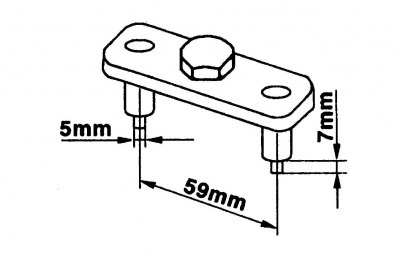Removing
Attention! Make sure that during operation there are no switched on electrical appliances, hot objects, open sources of fire, heat and radio waves in the room. Make sure your work area is well ventilated as fuel fumes are toxic. The fuel system is under pressure. When disconnecting its elements, splashing of fuel is possible - collect it with a rag. Perform work in protective glasses.
1. Disconnect a wire from the negative plug of the storage battery.
Attention! When the wire is disconnected from the negative terminal of the battery, the codes entered in them, such as the radio code, are erased in the memory devices.
2. If the fuel tank is full, pump out about 8 liters of fuel from it with a squeeze bulb, lowering the hose into the filler neck.

Pic. 5.45. Removing the lining in the luggage compartment: 1, 3 - clamp; 2 - ski bag; 4 - screw
3. Remove the lining in the luggage compartment against the wall separating the luggage compartment from the passenger compartment. To do this, disconnect clamp 3 (pic. 5.45), remove the screw.
4. If there is a ski bag 2, remove it and slide it up. Do the same operations on the other side of the car.
Note. Do not disconnect clip 1.
For T-model:
5. Remove the floor covering of the luggage compartment.

Pic. 5.46. Removing the fuel level sensor: 1 - contact connector; 2 - groove
6. Disconnect pin 1 (pic. 5.46) from the fuel level sensor.

Pic. 5.47. Sketch of a key for unscrewing the cover of the fuel level sensor
7. Unscrew the fuel level sensor by turning the cover to the left.
Note. Auto repair shops use a special key when performing this operation. However, such a key can be made independently. The sketch of the key is shown in fig. 5.47.
8. Take out the gauge of level of fuel together with a sealing ring.
Installation
9. Install the sensor with a new O-ring, lubricating it with engine oil.
10. Close the cover with the special key.
11. Connect pin 1.
12. Establish facing of a luggage space.
